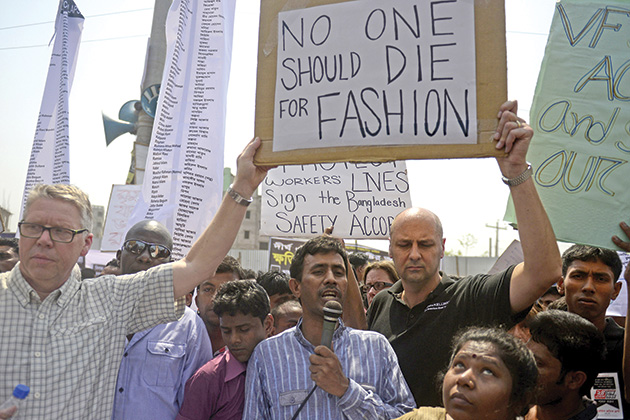
In April 2013, more than 1,300 fashion and textile workers died when the Rana Plaza factory collapsed in Dhaka, Bangladesh. The facility was used by a host of well-known retail brands as part of their global sourcing strategies. It was later discovered that the factory owners had ignored planning laws and constructed a structurally unsound building.
The disaster led some to question the sustainability of such global supply chains, which, in their minds, had resulted in avoidable deaths either due to the relentless pursuit of profits or an unacceptably reckless level of neglect. The implication has been that globalization means little more than the exploitation of remote workers, who are paid well below a living wage and work under conditions that would be unheard of in more developed countries.
The disaster caused great reputational damage to the companies involved and led them, as well as many industry peers, to undertake a number of initiatives to minimize the likelihood of a recurrence.
One such initiative that came into effect this year was the Bangladesh Safety Accord. Signed by trade unions and more than 170 global brands, including Abercrombie & Fitch, Fruit of the Loom, Adidas, Carrefour, Tesco, Primark and Benetton, this agreement commits the signatories to independent safety inspections and public reporting. The accord states that the parties are dedicated to the goal of a safe and sustainable industry in which no worker needs to fear fires, building collapses or other accidents that could be prevented with reasonable health and safety measures.
A similar agreement includes U.S. retailers Gap and Target, although their commitment does not go as far in terms of reporting. The World Economic Forum's Global Agenda Council on Logistics and Supply Chain has also committed to a project that facilitates the development and promotion of best practices of "good" supply chains.
Many in the apparel industry are now recognizing that, for supply chains to be sustainable, they need to factor in ethical, environmental and societal dimensions. Using low-cost suppliers may well bring short-term economic gains by reducing costs and enabling the development of concepts such as "fast fashion." The risks of this approach, however, must be weighed against any benefits.
Creating supply chain value from both an ethical and economic perspective is achievable-these goals should not be considered mutually exclusive. One of the keys to accomplishing both is an enhanced level of supply chain visibility. For instance, many companies have little or no idea of the provenance of materials used in their finished products, especially when they are sourced through multiple tiers of suppliers. This lack of transparency creates risks related to disruption through over-reliance on certain suppliers, such as those located in high-risk regions. But it means that there is also no information on the conditions under which these materials have been produced.
Undertaking an audit of the companies used not only by first-tier suppliers, but also their suppliers' suppliers, provides a supply chain manager with a range of information related to environmental and labor practices. It also allows decision-makers to put in place a holistic and potentially business-critical plan to mitigate a host of other risks.
Consequently, it can be in a manufacturer's or retailer's best interest to ensure that it fully understands its upstream supply chain, especially in sectors where virtual manufacturing networks are the norm, such as fashion or electronics.
Ignoring the ethical dimension also has implications for supply chains at a higher level. If industry does not take action to prevent disasters such as Rana Plaza, it risks being punished not only by the consumer, but also by governments-both in the markets where its goods are sold and where the goods are produced. This is not in anyone's interests, especially not the men and women who work in emerging markets. Global supply chains have lifted 600 million people out of poverty in China alone, and many other countries in Asia, Africa and Latin America stand to benefit in the future.
It appears that retailers and manufacturers have finally started to take a much wider view of supply chain risks, not merely the cost of production. By committing to higher standards-whether ethical or environmental-they are, in effect, mitigating supply chain risks and lowering the costs that otherwise may only be evident after a tragedy such as Rana Plaza.
